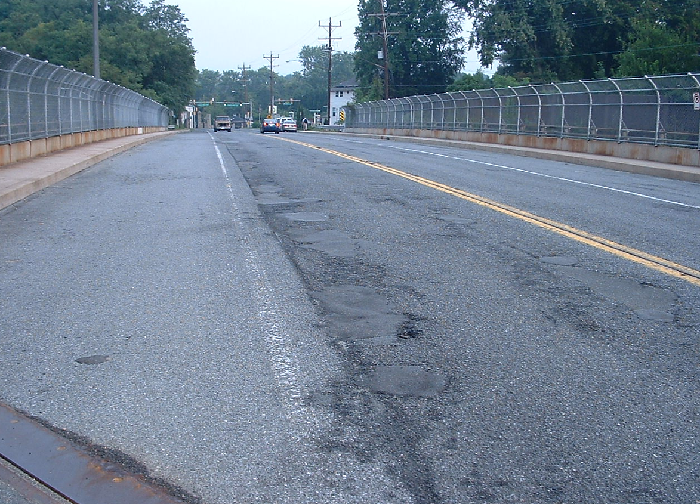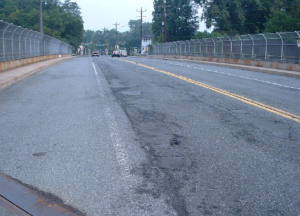
Seminary Road Bridge To Get New Beams, Driving Surface
A $6.2 million rehab project will remake the Seminary Road Bridge over the Capital Beltway, according to a Maryland Department of Transportation statement released Thursday. The work is expected to be complete by the end of 2018.
Constructed in 1964, the Seminary Road bridge remains safe to cross but it requires the steel beams and the driving surface to be replaced. Local utility service providers will work with Anchor Construction Corp. of Washington, D.C., the State Highway Administration’s contractor, to relocate utilities during the project.
Anchor Construction will shift traffic to one side of the bridge and work on the other side. Crews will control traffic throughout the project.
The project also involves crews applying a protective fiber wrap to the bridge pier columns, protecting the concrete and steel from the weather. SHA will resurface the Seminary Road bridge approaches, as well as the inner and outer loops of I-495 in the project area.
Two lanes of traffic – one in each direction – will be maintained on the bridge during the rehabilitation, but crews are permitted to close a single lane on Seminary Road Mondays through Fridays between 9 a.m. and 3 p.m. and Sunday nights through Friday mornings between 11 p.m. and 5 a.m.
On the Capital Beltway, crews are permitted to close multiple lanes, including brief total closures during steel beam removal and replacement Sunday nights through Friday mornings between 11 p.m. until 5 a.m.
MDOT SHA had planned to close the bridge and detour traffic completely, but determined after meeting with community leaders that maintaining traffic during construction better served area residents. Community input was vital in the planning of this project.
The project could disrupt travel. Approximately 224,000 vehicles travel on this section of I-495 each day, and nearly 38,000 travel on Seminary Road. Although traffic volumes will be significantly less during off-peak and overnight hours, motorists are encouraged to allow for additional travel time and seek alternate routes.
Of 69 structurally deficient bridges identified by the Hogan Administration in June 2015, 41 have been rehabilitated or replaced, according to the statement. The remaining bridges are in design stages or are moving toward construction and repair.


Engage us on Facebook
Follow us on Twitter
Tweets by @mymcmedia